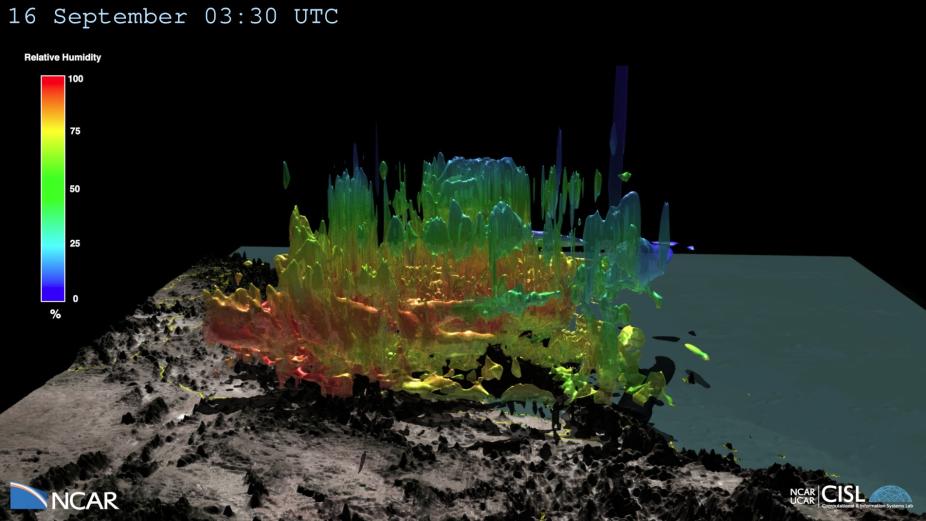Geyser and Caldera
The Geyser and Caldera clusters were specialized data analysis and visualization resources that went into service at the NCAR-Wyoming Supercomputing Center after acceptance testing concluded in September 2012. They used the same login nodes and GLADE data storage system as the Yellowstone supercomputer, and remained in service for another year in tandem with the Cheyenne supercomputer after Yellowstone’s decommissioning in December 2017.
Geyser was used for most large-scale data analysis and post-processing tasks, including 3D visualization, with applications that did not support distributed-memory parallelism. Supported applications included NCL, VAPOR, MATLAB, IDL, CDO, and numerous others. Geyser had 16 large-memory nodes; each node had 1 TB of memory and 40 Intel Westmere processor cores. Each node also had one NVIDIA GPU.
Caldera was used to run distributed-memory parallel applications such as ParaView and VisIt and for development and testing of general-purpose GPU (GPGPU) code. Each of its 16 nodes had two NVIDIA GPUs, 64 GB of memory, and 16 Intel Sandy Bridge cores.
In preparation for the Geyser and Casper systems’ decommissioning on December 31, 2018, users migrated their data analysis and visualization workflows to the new Casper cluster.

The Geyser and Caldera clusters were used to visualize data as in this CISL Visualization Gallery image of Hurricane Odile shortly after it made landfall in 2014.